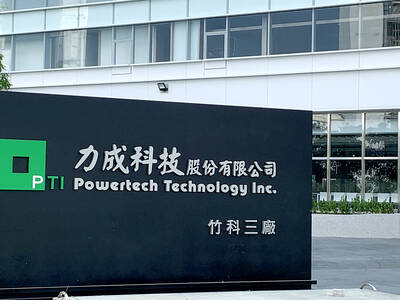Asia should set up an exchange-rate coordination mechanism to ensure the region’s currencies reflect economic fundamentals and maintain financial stability, central bank Governor Perng Fai-nan (彭淮南) said.
“Short-term international capital flows can create tension for intra-regional exchange rate movements,” Perng said at an Asian Development Bank (ADB) meeting in Manila on Friday, according to a transcript of the speech posted on the lender’s Web site.
During the past year, capital has poured into Asia and “disrupted economic and financial stability,” Perng said, adding that regional economies need to be well prepared for “external shocks caused by volatile and unpredictable” flows.
Emerging-market bond funds had inflows for 12 straight weeks through the first week of last month, according to data from EPFR Global, a US provider of fund flows.
Investors put US$540 million into emerging-market fixed-income funds in the week ended April 25, EPFR said, and the MSCI Emerging Markets Index has gained 11 percent this year.
“It’s not difficult to see that short-term international capital movements rather than economic fundamentals have become the main driver of movements in exchange rates and stock prices” across Asia, said Perng, who is the longest-serving central bank governor among Asian economies tracked by Bloomberg.
Perng, 73, has headed the central bank since February 1998, according to the monetary authority’s Web site.
Perng, who left borrowing costs unchanged at 1.875 percent for a third meeting in March, has said he would focus more on inflation than growth this year.
Asian policymakers agreed last week to double the size of their foreign-currency reserve pool as they step up efforts to shield the region from global financial shocks.
Japan, China, South Korea and 10 Southeast Asian nations agreed on Thursday to boost the so-called Chiang Mai Initiative Multilateralization Agreement to US$240 billion.
Even as they increase cooperation, Asian nations are unlikely to follow Europe in pursuing a single currency anytime soon, Malaysian central bank Governor Zeti Akhtar Aziz said last week.
The region remains too diverse and such a move would be too costly, she said.
Philippine central bank Deputy Governor Diwa Guinigundo echoed Perng’s concern, saying on Friday at an ADB meeting that capital flows complicate monetary policy.
A regional exchange-rate coordination system would also help facilitate intra-regional trade, investment and economic integration by lowering transaction costs, Perng said.
The yen remains close to a high against the dollar that has hurt exporters such as Sharp Corp, while South Korea’s Samsung Electronics Co has benefited from a weaker won.
Taiwan may sign a cross-strait currency settlement agreement with China as early as this month, the Taipei-based Economic Daily News reported on Friday, without saying where it got the information.

RUN IT BACK: A succesful first project working with hyperscalers to design chips encouraged MediaTek to start a second project, aiming to hit stride in 2028 MediaTek Inc (聯發科), the world’s biggest smartphone chip supplier, yesterday said it is engaging a second hyperscaler to help design artificial intelligence (AI) accelerators used in data centers following a similar project expected to generate revenue streams soon. The first AI accelerator project is to bring in US$1 billion revenue next year and several billion US dollars more in 2027, MediaTek chief executive officer Rick Tsai (蔡力行) told a virtual investor conference yesterday. The second AI accelerator project is expected to contribute to revenue beginning in 2028, Tsai said. MediaTek yesterday raised its revenue forecast for the global AI accelerator used

Taiwan Semiconductor Manufacturing Co (TSMC, 台積電) has secured three construction permits for its plan to build a state-of-the-art A14 wafer fab in Taichung, and is likely to start construction soon, the Central Taiwan Science Park Bureau said yesterday. Speaking with CNA, Wang Chun-chieh (王俊傑), deputy director general of the science park bureau, said the world’s largest contract chipmaker has received three construction permits — one to build a fab to roll out sophisticated chips, another to build a central utility plant to provide water and electricity for the facility and the other to build three office buildings. With the three permits, TSMC

The DBS Foundation yesterday announced the launch of two flagship programs, “Silver Motion” and “Happier Caregiver, Healthier Seniors,” in partnership with CCILU Ltd, Hondao Senior Citizens’ Welfare Foundation and the Garden of Hope Foundation to help Taiwan face the challenges of a rapidly aging population. The foundation said it would invest S$4.91 million (US$3.8 million) over three years to foster inclusion and resilience in an aging society. “Aging may bring challenges, but it also brings opportunities. With many Asian markets rapidly becoming super-aged, the DBS Foundation is working with a regional ecosystem of like-minded partners across the private, public and people sectors

BREAKTHROUGH TECH: Powertech expects its fan-out PLP system to become mainstream, saying it can offer three-times greater production throughput Chip packaging service provider Powertech Technology Inc (力成科技) plans to more than double its capital expenditures next year to more than NT$40 billion (US$1.31 billion) as demand for its new panel-level packaging (PLP) technology, primarily used in chips for artificial intelligence (AI) applications, has greatly exceeded what it can supply. A significant portion of the budget, about US$1 billion, would be earmarked for fan-out PLP technology, Powertech told investors yesterday. Its heavy investment in fan-out PLP technology over the past 10 years is expected to bear fruit in 2027 after the technology enters volume production, it said, adding that the tech would